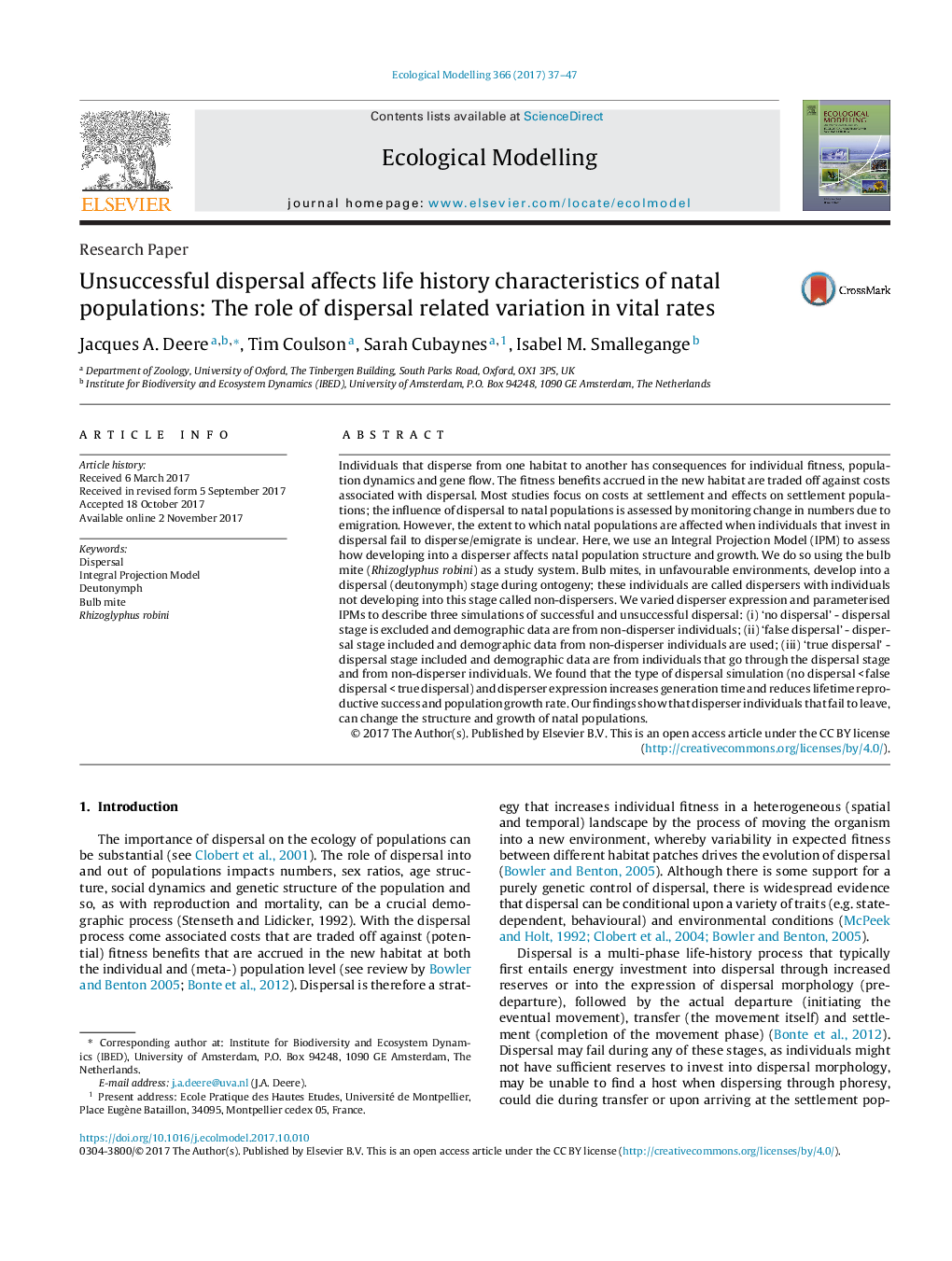| Article ID | Journal | Published Year | Pages | File Type |
|---|---|---|---|---|
| 8846173 | Ecological Modelling | 2017 | 11 Pages |
Abstract
Individuals that disperse from one habitat to another has consequences for individual fitness, population dynamics and gene flow. The fitness benefits accrued in the new habitat are traded off against costs associated with dispersal. Most studies focus on costs at settlement and effects on settlement populations; the influence of dispersal to natal populations is assessed by monitoring change in numbers due to emigration. However, the extent to which natal populations are affected when individuals that invest in dispersal fail to disperse/emigrate is unclear. Here, we use an Integral Projection Model (IPM) to assess how developing into a disperser affects natal population structure and growth. We do so using the bulb mite (Rhizoglyphus robini) as a study system. Bulb mites, in unfavourable environments, develop into a dispersal (deutonymph) stage during ontogeny; these individuals are called dispersers with individuals not developing into this stage called non-dispersers. We varied disperser expression and parameterised IPMs to describe three simulations of successful and unsuccessful dispersal: (i) 'no dispersal' - dispersal stage is excluded and demographic data are from non-disperser individuals; (ii) 'false dispersal' - dispersal stage included and demographic data from non-disperser individuals are used; (iii) 'true dispersal' - dispersal stage included and demographic data are from individuals that go through the dispersal stage and from non-disperser individuals. We found that the type of dispersal simulation (no dispersal < false dispersal < true dispersal) and disperser expression increases generation time and reduces lifetime reproductive success and population growth rate. Our findings show that disperser individuals that fail to leave, can change the structure and growth of natal populations.
Keywords
Related Topics
Life Sciences
Agricultural and Biological Sciences
Ecology, Evolution, Behavior and Systematics
Authors
Jacques A. Deere, Tim Coulson, Sarah Cubaynes, Isabel M. Smallegange,
